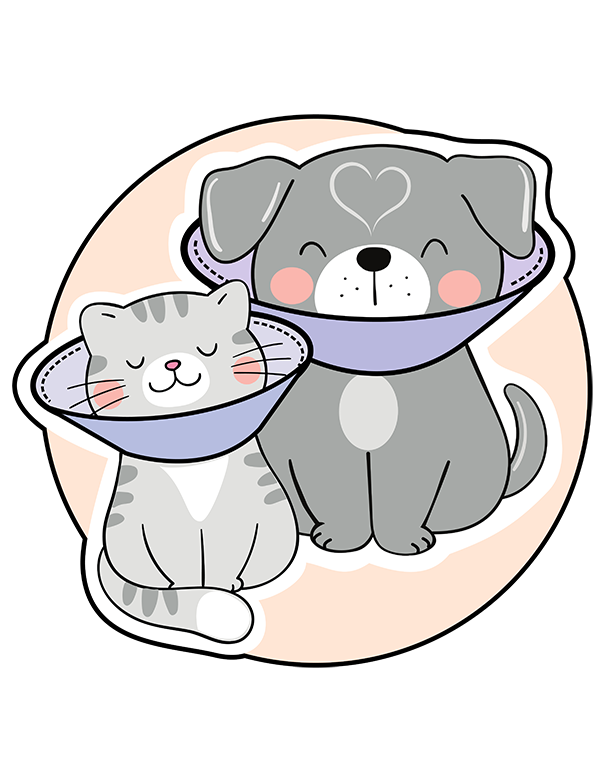Your furry bundle of joy may not grasp the significance of February 14, but that doesn't mean they should miss out on the festivities of love! The key to winning their heart? Indulging their taste buds, naturally. Prepare to charm their paws off with these homemade Valentine's Day dog treats guaranteed to get their hearts thumping and tails swishing. Dive into our selection of the finest Valentine's Day treats for your canine companions. Bone appétit!
Cranberry Oatmeal Dog Cookies
Recipe courtesy of Daily Paws Test Kitchen, Medically reviewed by Alicen Tracey, DVM
Treat your dog to the mouthwatering taste that includes dried cranberries, rolled oats, cinnamon, and yogurt chips for a delightful sweet treat. Consider shaping them with a heart-shaped cookie cutter for added charm! Cranberries are the highlight, bringing both flavor and numerous health advantages for your furry friend. Although they might look as if they've been topped with chocolate, these treats are actually adorned with a drizzle of melted carob, a dog-friendly substitute.
Prep: 30 mins Bake: 30 mins Stand: 15 mins Total: 1 hr 15 mins Yield: 48 2 1/2-inch cookies
Ingredients
4 cups whole wheat flour
1 cup regular rolled oats
½ cup unsweetened dried cranberries, finely chopped (see notes)
1 teaspoon baking powder
½ teaspoon cinnamon
1 egg
¼ cup molasses
¼ cup coconut oil, melted and cooled slightly
½ cup water, as needed
½ cup carob and/or yogurt coating chips, melted
Directions
Preheat oven to 350°F. Coat two cookie sheets with nonstick cooking spray; set aside.
In a large bowl, combine flour, oats, cranberries, baking powder, and cinnamon. In a small bowl, whisk together the egg, molasses, and coconut oil. Add egg mixture to flour and stir to combine, adding water, a little at a time, until a firm dough forms.
On a well-floured surface, roll dough to 1/4-inch thick. Using a dog bone cookie cutter, cut dough into shapes, re-rolling scraps as needed. Using a fork, poke 4 holes in the center of each cookie. Place shapes on prepared pans, spacing 1 inch apart.
Bake treats for 30 minutes. Turn off oven and let cookies cool inside for at least 1 hour (this will help make them crisp). Lightly drizzle cookies with melted carob and/or yogurt chips and let stand about 15 minutes or until set.
Notes
DO NOT substitute raising for the dried cranberries. Grapes and raisins are toxic to dogs!
Treats should make up no more than 10 percent of a dog's daily calorie intake.
Transfer decorated cookies to an airtight container or resealable plastic bag for storate. Store at room temperature up to 2 weeks or freeze up to 3 months. Thaw before serving.
Peanut Butter Banana Grain-Free Treats
Recipe courtesy of Daily Paws Test Kitchen, Medically reviewed by Alicen Tracey, DVM
If dogs could communicate in our words, their most frequent request would be for just one more taste of their favorite treat: peanut butter! But, finding the right snack for those with grain sensitivities can pose a challenge. That is, until you discover this grain-free dog treat recipe featuring peanut butter and banana. By replacing traditional wheat flour with almond and coconut flours, and incorporating generous amounts of banana and peanut butter, you've got a treat that will have them pleading for more well beyond February 14.
Prep: 30 mins Chill: 20 mins Bake: 25 mins Cool: 1 hr Total: 2 hrs 15 mins Yield: 75 small treats
Ingredients
¾ cup almond flour
¾ cup coconut flour
3 ripe bananas, mashed
⅓ cup natural creamy peanut butter (see notes)
3 tablespoons hemp or chia seeds (optional)
Directions
Preheat oven to 325°F. In a small bowl, stir together the almond and coconut flours. In a medium bowl, stir together mashed bananas and peanut butter until smooth. Add half of the flour and hemp seeds (if using); stir to combine. Add remaining flour and, using hands if needed, mix into a dough. Cover and chill dough for 20 minutes.
On a well-floured surface, roll out dough to 1/4-inch thick. Using a small, bone-shaped cookie cutter or knife, cut out shapes as desired. Re-roll scraps as needed. Arrange shapes on parchment-lined baking sheets. Using a fork, poke 4 holes in the center of each treat.
Bake treats for about 25 minutes or until dried and bottoms are golden. Turn off oven and allow treats to cool inside 1 hour.** Transfer treats to a wire rack and cool completely before storing.
Notes
DO NOT select peanut butter or any items that contain the ingredient xylitol. It is toxic to pets, even in small amounts.
While cooling the treats in the oven isn't a necessary step, we find that this technique results in crisper treats that store a bit longer.
Transfer completely cooled treats to an airtight container or resealable bag for storage. Store at room temperature up to 2 weeks or freeze up to 3 months. Thaw before serving.
Pumpkin Carrot Pupcakes
Recipe courtesy of Daily Paws Test Kitchen, Medically reviewed by Alicen Tracey, DVM
In the canine universe, pumpkin reigns supreme as a superfood! Packed with essential vitamins and antioxidants, it stands out as a natural treat that not only pleases your dog's taste buds but also promotes their gut health. There's no need to wait for October to indulge! Crafted with canned pumpkin, yogurt, honey, and peanut butter, this pumpkin carrot dog cupcake recipe is sure to have your Valentine drooling with anticipation.
Prep: 25 mins Bake: 16 mins Cool: 30 mins Total: 1 hr 11 mins Yield: 24 cupcakes
Ingredients
⅔ cup white whole wheat flour
1 teaspoon baking powder
½ teaspoon pumpkin pie spice (optional)
½ cup canned pumpkin
¾ cup plain nonfat yogurt (see notes)
1 egg
1 tablespoon honey
5 tablespoons natural peanut butter (see notes)
½ cup finely shredded carrot
Directions
Preheat oven to 350°F. Grease and flour or line twenty-four 1 3/4-inch muffin cups with paper liners; lightly coat liners with nonstick cooking spray.
In a medium bowl, whisk together flour, baking powder, and pumpkin pie spice (optional). In another medium bowl, whisk together the pumpkin, 1/4 cup yogurt, egg, 2 tsp. honey, and 1 Tbsp. peanut butter. Stir the pumpkin mixture into the flour mixture until nearly combined. Fold in shredded carrot.
Scoop batter into prepared pan(s), filling muffin cups about 2/3 full. Bake 16 to 18 minutes or until a toothpick comes out clean. Cool completely on wire racks.
In a bowl, beat together remaining 1/2 cup yogurt, remaining 1/4 cup peanut butter, and remaining 1 tsp. honey until smooth. Pipe or spoon the frosting onto cooled cupcakes.
Notes
DO NOT select peanut butter or any items that contain the ingredient xylitol. It is toxic to pets, even in small amounts.
Place cupcakes in an airtight container to store. Store in the refrigerator up to 1 week.
Peanut Butter Oatmeal Treats
Recipe courtesy of Daily Paws Test Kitchen, Medically reviewed by Alicen Tracey, DVM
Grab your heart-shaped cookie cutter and whip up these delightful peanut butter oatmeal treats, featuring the star of the show—peanut butter! This recipe yields a generous amount of goodies that can be stored in the freezer, ensuring a supply of homemade treats that will endure well beyond the cleanup of this Valentine's Day's baking session.
Prep: 30 mins Chill: 1 hr Bake: 22 mins Stand: 1 day Total: 1 day 1 hr 52 mins
Yield: 576 1/2-inch treats or 256 3/4-inch treats
Ingredients
½ cup natural creamy peanut butter (see notes)
⅓ cup honey
⅓ cup olive oil
1 egg
1 cup nonfat dry milk powder
½ cup fine graham cracker crumbs (7 squares)
½ cup quick-cooking rolled oats
¼ cup wheat germ
1 teaspoon baking powder
½ teaspoon cinnamon
2 ½ cups whole wheat flour
¾ cup water
Directions
In a very large bowl, beat peanut butter, honey, oil, and egg with an electric mixer on low to medium speed until combined. Add dry milk powder, cracker crumbs, oats, wheat germ, cinnamon, and baking powder; beat until combined.
Add flour and 1/4 cup water to beaten mixture; beat on low speed, stopping to scrape bowl as necessary (mixture will be crumbly). Add as much of the remaining water as needed, 1/4 cup at a time, beating until the dough clings together. (Dough should be moist but not sticky.)
Remove dough from bowl. Turn dough out onto a well-floured surface. Knead dough gently 8 to 10 strokes until nearly smooth. Divide dough into 4 equal portions, then roll each portion out to a 6x6-inch square that is about 3/8-inch thick. Place squares on wax paper-lined tray and chill 1 hour.
Preheat oven to 300°F. For smaller dogs, cut each dough square into 1/2-inch pieces. For larger dogs, cut each square into 3/4-inch pieces. Place pieces on parchment-lined baking sheets. Bake for 20–22 minutes or until edges are firm and bottoms are browned. Cool pans on wire racks. For extra-crispy treats, let them stand, uncovered, on racks overnight before packaging (see notes below).
Notes
DO NOT select peanut butter or any items that contain the ingredient xylitol. It is toxic to pets, even in small amounts.
Store at room temperature in airtight containers up to 2 weeks or label and freeze for up to 3 months.









